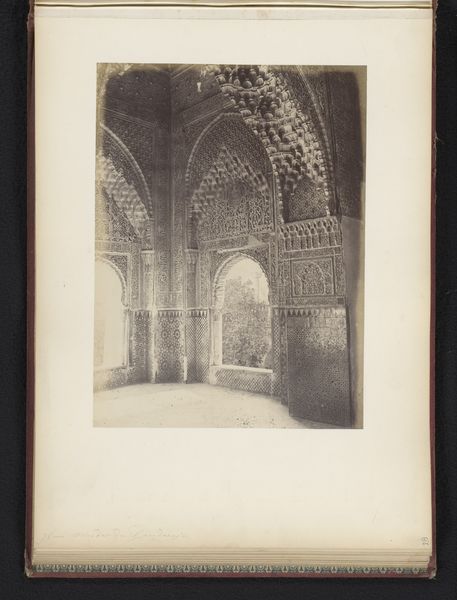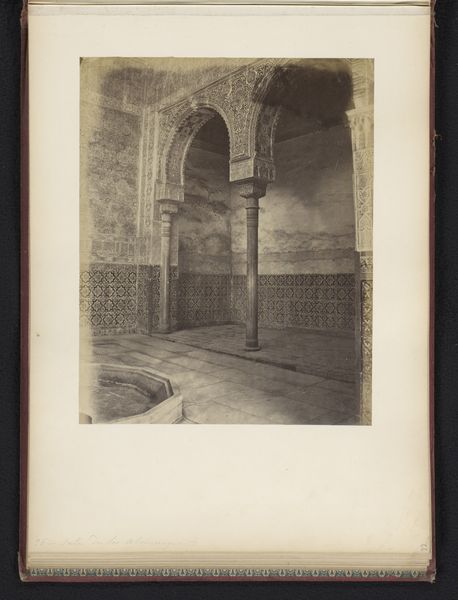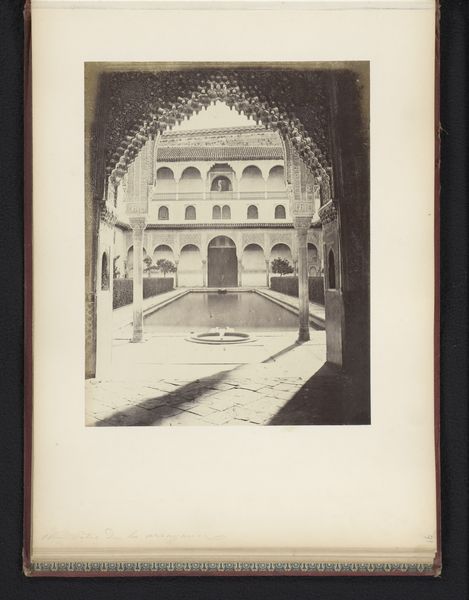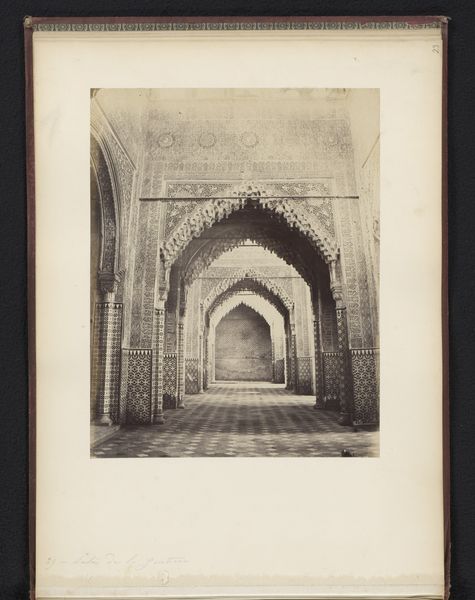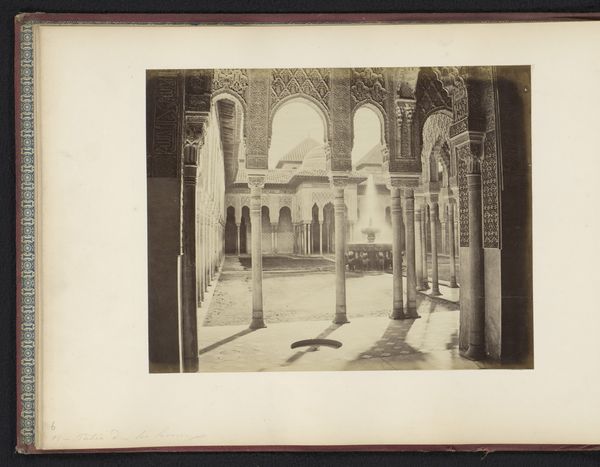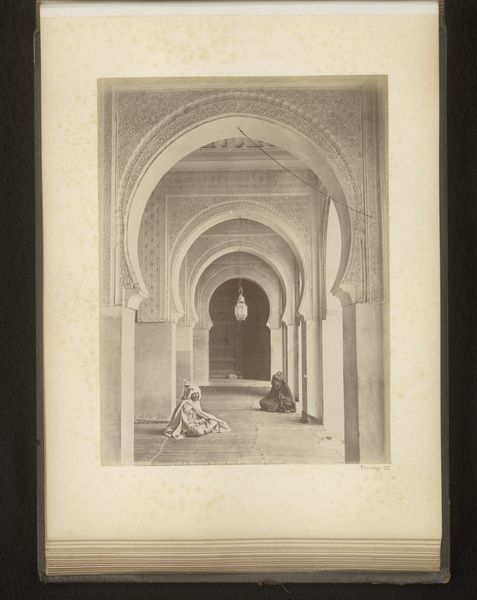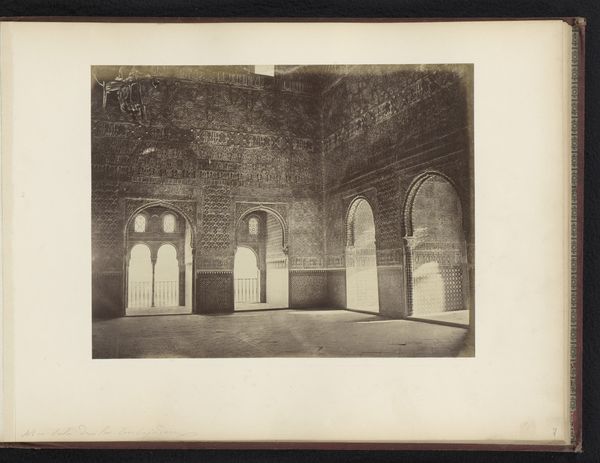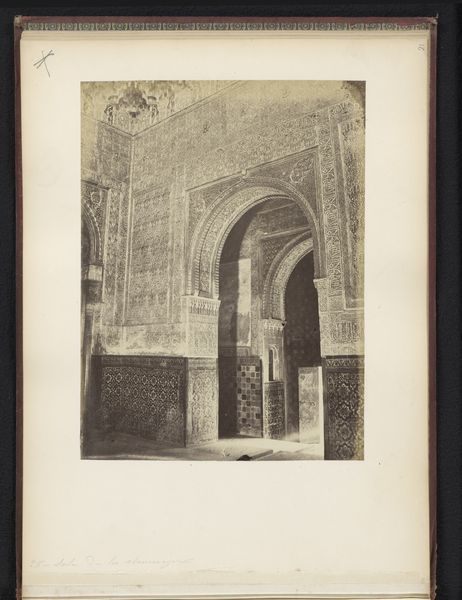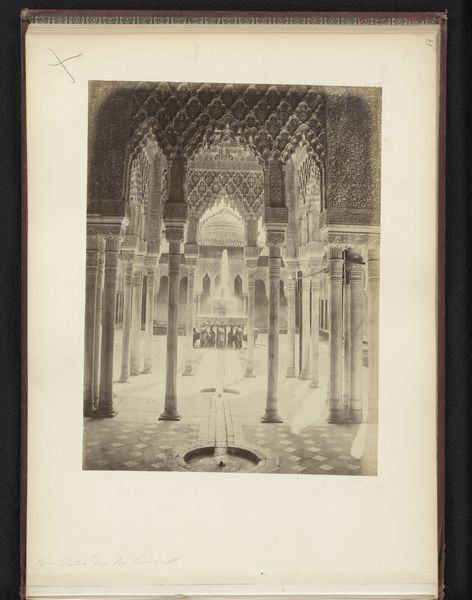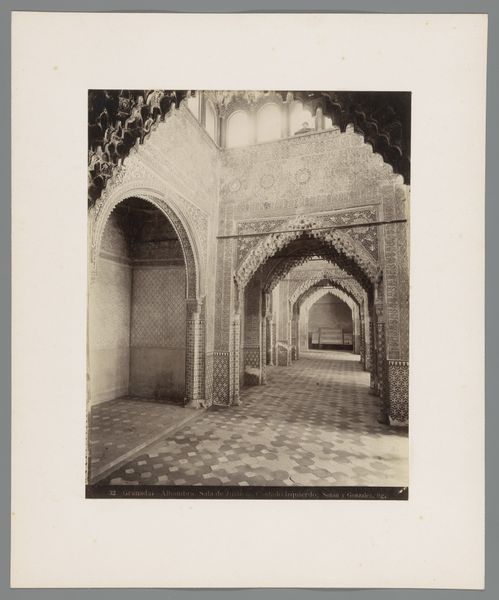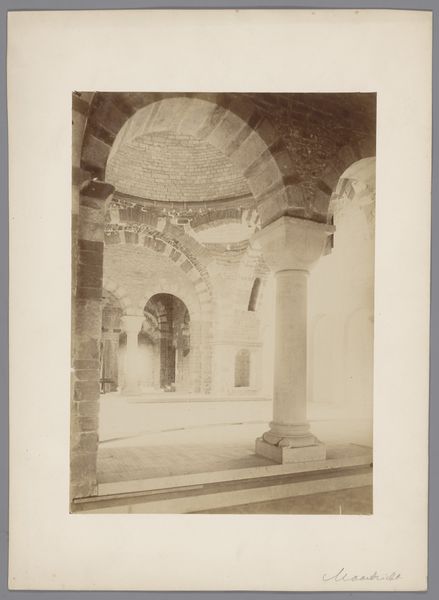
photography, architecture
#
sculpture
#
landscape
#
photography
#
islamic-art
#
architecture
Dimensions: height 244 mm, width 186 mm
Copyright: Rijks Museum: Open Domain
Editor: Here we have "Interior of the Hall of Justice in the Alhambra, Granada, Spain," a photograph taken in 1906 by C Maufsaise. The monochromatic palette creates an atmosphere of solemn stillness; what structural elements strike you the most? Curator: Observe the repetition of the archways and vertical pillars. Note how they frame the spaces, guiding the eye inward and creating a sense of depth. This mirroring contributes to a unified whole, underscoring the calculated precision embedded in the structure. Editor: That’s an astute observation. What about the ornamentation, all of those complex patterns? Curator: Precisely. The intricate detailing adorning every surface serves not only as decoration but also as a visual language, enriching the structure’s inherent geometry and drawing our attention to the surface textures. Consider the balance of positive and negative space, how it informs our understanding of architectural solidity and fragility. Editor: The photograph emphasizes form, light, and shadow, transforming stone into almost ethereal shapes. What would you say is the relationship between form and function here? Curator: In the Alhambra, it is my opinion that the very concept of pure functionality is deliberately subsumed beneath a deliberate demonstration of ornamented grandeur, intended to overwhelm and inspire awe. Do you not agree? Editor: I now perceive it differently; that delicate balance enhances the aesthetic experience. I appreciate your detailed perspectives, I find the artwork even more interesting now. Curator: And I am glad to share it; it's by discussing various approaches like these that one's perception can evolve to appreciate new facets and qualities in art.
Comments
No comments
Be the first to comment and join the conversation on the ultimate creative platform.
